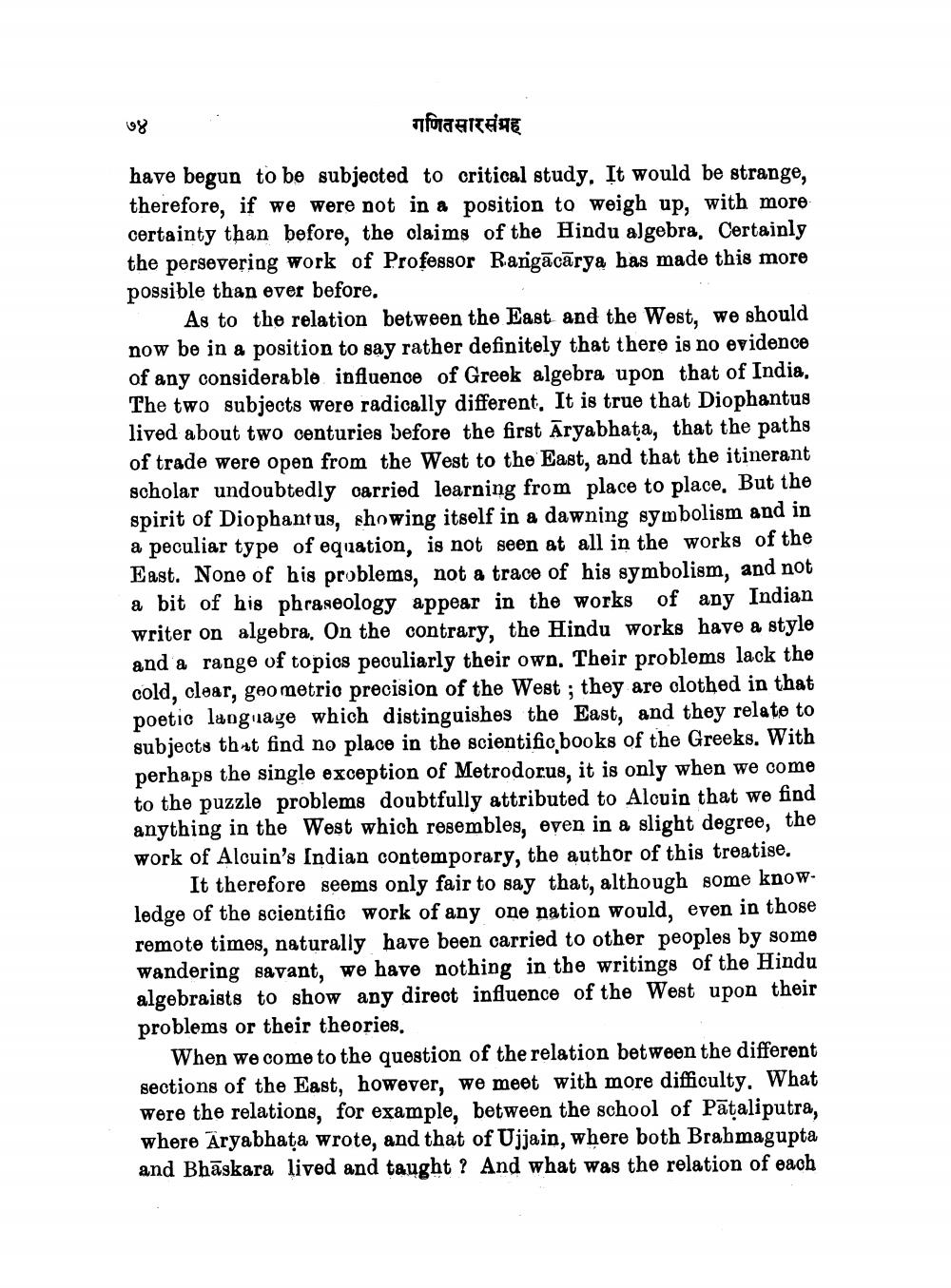________________
गणित सारसंग्रह
have begun to be subjected to critical study. It would be strange, therefore, if we were not in a position to weigh up, with more certainty than before, the claims of the Hindu algebra, Certainly the persevering work of Professor Rangacarya has made this more possible than ever before.
७४
As to the relation between the East and the West, we should now be in a position to say rather definitely that there is no evidence of any considerable influence of Greek algebra upon that of India. The two subjects were radically different. It is true that Diophantus lived about two centuries before the first Aryabhata, that the paths of trade were open from the West to the East, and that the itinerant scholar undoubtedly carried learning from place to place. But the spirit of Diophant us, showing itself in a dawning symbolism and in a peculiar type of equation, is not seen at all in the works of the East. None of his problems, not a trace of his symbolism, and not a bit of his phraseology appear in the works of any Indian writer on algebra, On the contrary, the Hindu works have a style and a range of topics peculiarly their own. Their problems lack the cold, clear, geometric precision of the West; they are clothed in that poetic language which distinguishes the East, and they relate to subjects that find no place in the scientific books of the Greeks. With perhaps the single exception of Metrodorus, it is only when we come to the puzzle problems doubtfully attributed to Alcuin that we find anything in the West which resembles, even in a slight degree, the work of Alcuin's Indian contemporary, the author of this treatise.
It therefore seems only fair to say that, although some knowledge of the scientific work of any one nation would, even in those remote times, naturally have been carried to other peoples by some wandering savant, we have nothing in the writings of the Hindu algebraists to show any direct influence of the West upon their problems or their theories.
When we come to the question of the relation between the different sections of the East, however, we meet with more difficulty. What were the relations, for example, between the school of Pataliputra, where Aryabhata wrote, and that of Ujjain, where both Brahmagupta and Bhaskara lived and taught? And what was the relation of each




